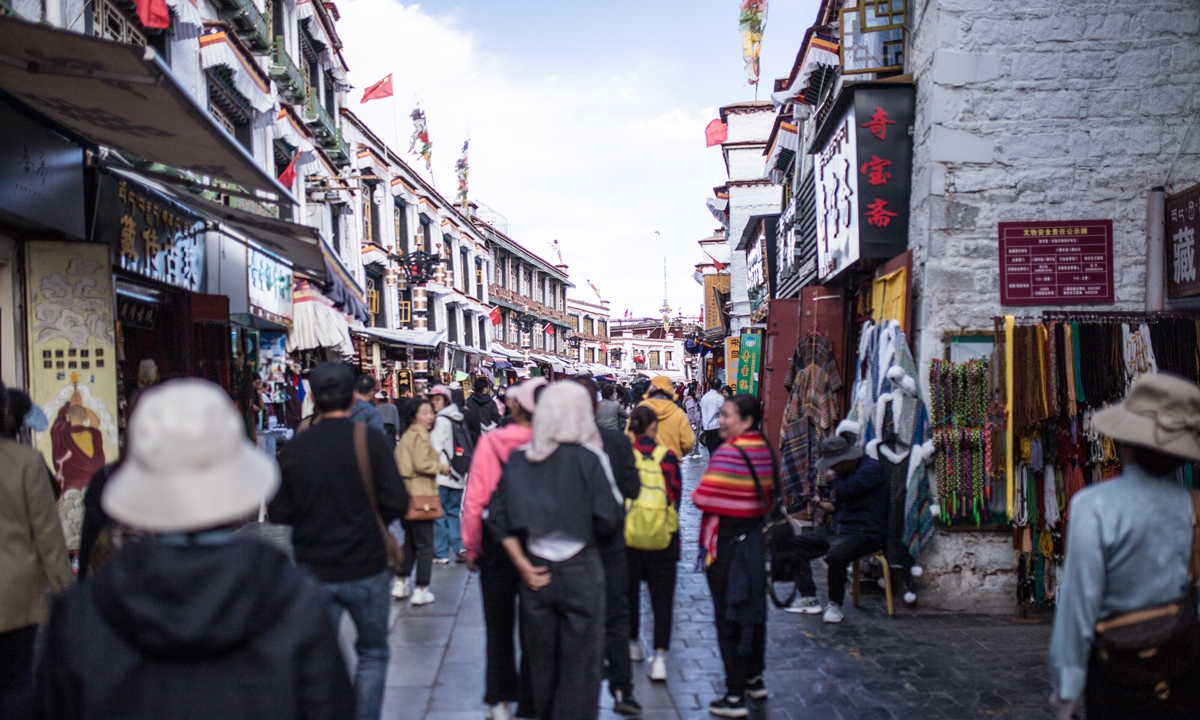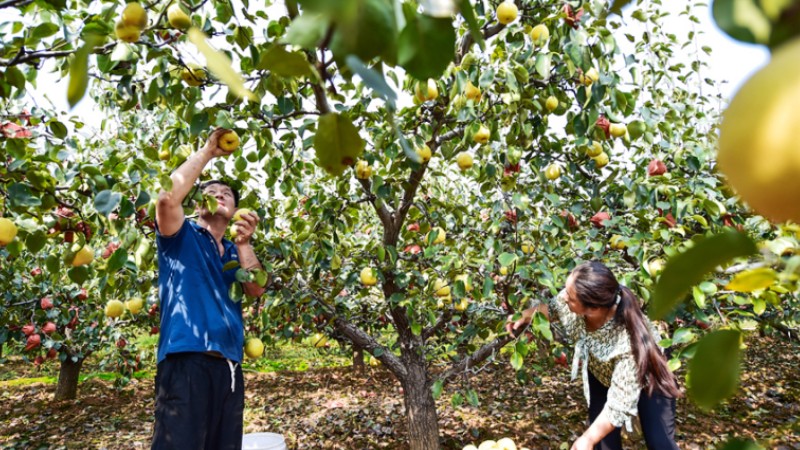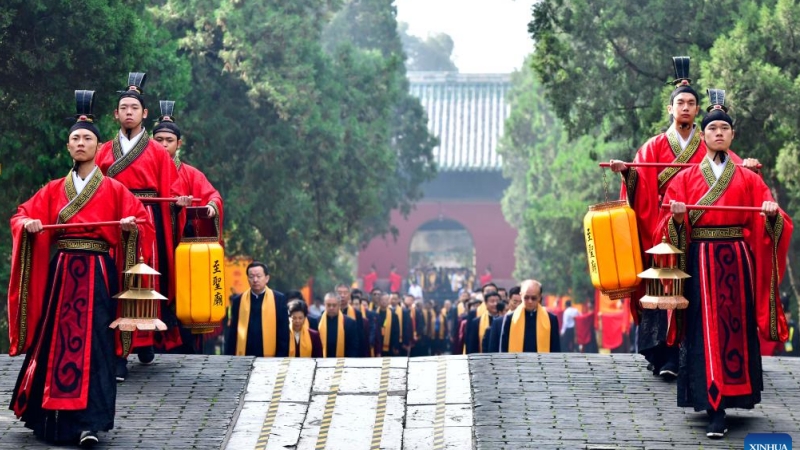Openness, protection of Jokhang Temple in heart of Lhasa shows China's freedom of religion

Tourists and worshipers walk along the Barkhor Bazaar in the city of Lhasa in Southwest China's Xizang Autonomous Region on October 10, 2023. Photo: Shan Jie/GT
The Jokhang Temple sitting at the heart of Lhasa, capital city of Southwest China's Xizang Autonomous Region, is always enveloped in wispy smoke and the fragrance of burning incense as devotees tirelessly circle around it as they prostrate themselves along the Barkhor Bazaar. Visitors speaking various languages and dialects, wearing Tibetan attire and striking poses in front of cameras can be seen everywhere. Inside the temple, both tourists and worshipers share this artistic sanctuary. Today, the openness and preservation of the Jokhang Temple embody freedom of religion in the region.
"Jokhang Temple represents Lhasa, and coming here means truly arriving in Lhasa. That is why so many people are coming here, as it is the final destination for the pilgrimages undertaken by many Tibetan people," Duobujie, a guide who has worked at the Jokhang Temple for over 20 years, explained to visiting media on Tuesday.
Built in the seventh century, the Jokhang Temple houses numerous historical relics and exhibits quintessential Tibetan architecture. In 2000, it was designated as a UNESCO World Heritage Site as part of the historical ensemble that makes up the Potala Palace.
Luosang, one of the administrative staff at Jokhang Temple, told the Global Times on Tuesday that the temple's operations made full use of China's policy of religious freedom.
He explained that the temple opens at 8:15 every morning to welcome worshipers, and even though it officially closes at 3 in the afternoon, it continues to operate for several more hours to accommodate both worshipers and tourists. Worshipers visiting the Jokhang Temple are not charged, and there are dedicated queues for them. To meet the needs of both worshipers and tourists, the temple rests only one day a week.
"Whether they come from Tibetan areas in China, other regions in the country, or internationally, they can all enjoy their freedom of religious belief at Jokhang Temple," Luosang said. "For the elderly, disabled, and those with limited mobility, we have set up a green channel, and our staff provides assistance."
Given its 1,300 years of history, protection and preservation of the temple are paramount. In recent years, the Jokhang Temple has also introduced technology to comprehensively safeguard its artifacts and architectural structures.
For instance, it has partnered with the Palace Museum in Beijing to conduct 3D scans of all the Buddha statues, creating digital records and a database. Luosang mentioned that their next step is to document the extensive exquisite murals within the temple.
Special religious texts, such as the Lijiang version of the Tripitaka, or Buddhist canon, have also been scanned and archived. "No matter how many years go by, we can continue to inherit and promote them," he stated.
Furthermore, the local government and relevant departments have allocated over 30 million yuan ($4.1 million) to upgrade Jokhang Temple's fire safety, electrical systems, and security.
"We have a surveillance system that monitors the artifacts around the temple, ensuring comprehensive protection," Luosang explained. "Our next focus is to implement a monitoring and early warning system for the ancient building's walls and structures."
"Currently, the most critical part of our work is fire prevention, because lost artifacts can be found, but once they are burnt, they are gone," he said, noting that the temple is already using technology such as wired smoke detectors, wireless smoke detectors, and thermal imaging for protection.
In Xizang, all religions and sects are equal, as are all believers and non-believers. There are more than 1,700 sites for Tibetan Buddhist activities with 46,000 monks and nuns, four mosques serving 12,000 native Muslims, and a Catholic church with more than 700 followers, according to a white paper published in May 2021 by China's State Council Information Office.
In order to adapt religions to a Chinese context, ensure the freedom and order of religious belief, and manage religious affairs in accordance with the law, the country has formulated the Measures on the Management of the Reincarnation of Living Buddhas of Tibetan Buddhism in accordance with the Regulations on Religious Affairs, read the white paper.
Photos
Related Stories
- Exhibition highlights future technologies on cultural relic conservation
- China Focus: Traditional Chinese culture inspires global popularity of art toys
- Diverse cultures, radiance of glory
- UNESCO World Heritage status invigorates conservation of China's old tea forests
- Chinese craft: cuttlefish bone lamp
- Representatives attend third China Xizang Trans-Himalaya Forum for Int'l Cooperation
- West's lies about Xizang 'completely untenable': China's top diplomat
Copyright © 2023 People's Daily Online. All Rights Reserved.









